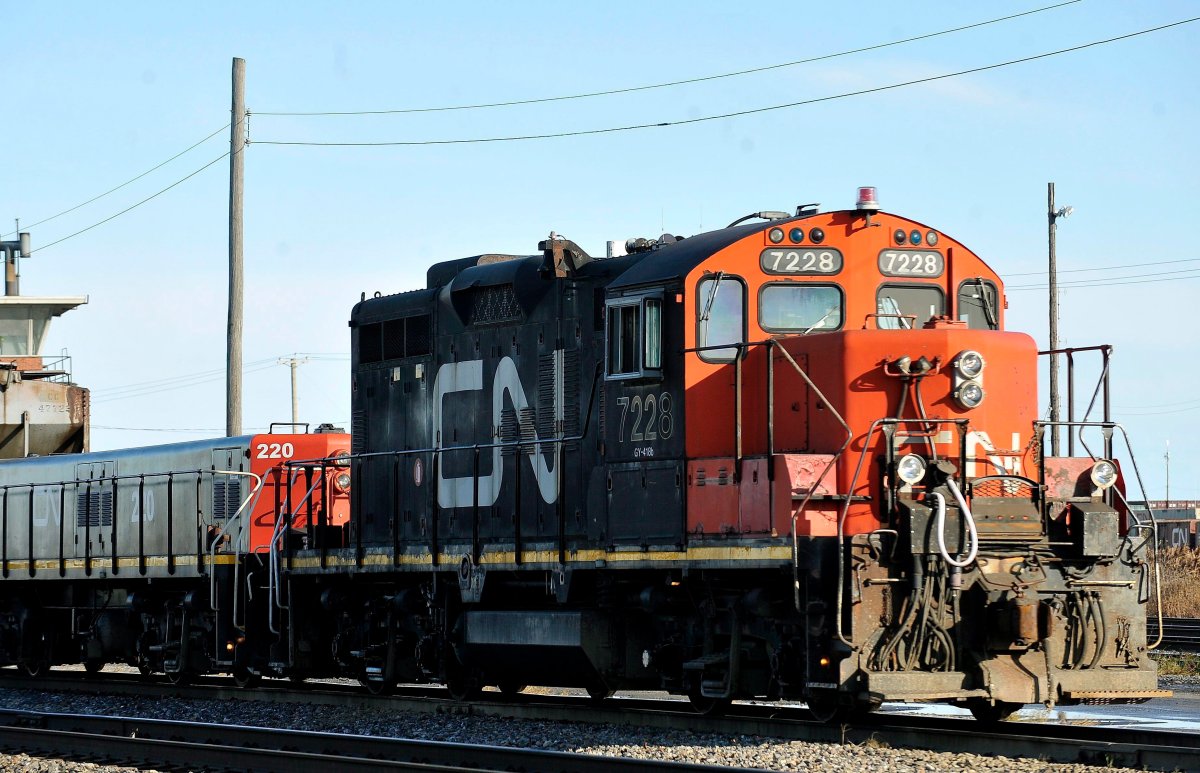More needs to be done to reduce uncontrolled movements in rail yards, the Transportation Safety Board of Canada (TSB) said after a Canadian National Railway employee died at a Saskatchewan rail yard.

A foreman and a helper were performing switching operations at the Melville rail yard on Dec. 22, 2017, when the foreman became pinned between three moving cars and a group of stationary cars.
The 26-year-old woman suffered fatal injuries.
“This was a tragic incident and CN wishes to extend its condolences to Melissa’s family, colleagues, and community. Safety is a core value at CN and it is a critical part of everything we do,” CN said in a statement to Global News.
“We learn from every event on our network to make CN a safer railroad for our employees, the public and the communities where we operate.”
In its recommendation released Wednesday, the TSB said Transport Canada needs to work with both the industry and labour representatives to identify the cause of uncontrolled movements and develop strategies to reduce their occurrences.

Get breaking National news
“Switching cars without use of air brakes in rail yards is a routine railway industry practice, but one that requires a certain degree of skill, experience and judgment to do safely,” said TSB chair Kathy Fox.
- ‘Alarming trend’ of more international students claiming asylum: minister
- TD Bank moves to seize home of Russian-Canadian jailed for smuggling tech to Kremlin
- Why B.C. election could serve as a ‘trial run’ for next federal campaign
- Justin Trudeau headed to UN Summit of the Future amid international instability
“Since 2009, there have been 185 occurrences involving switching without air and these are on an upward trend. This tells us that current defenses are not sufficient to reduce the number of uncontrolled movements.”
In Melville, TSB said switching operations were carried out by shoving cars with a remote-controlled locomotive.
Crews would then release the cars and let them roll under their own momentum to the intended track without the use of air brakes — an industry practice known as “kicking cars,” the TSB said.
On Dec. 22, 2017, an attempt was made to kick three cars up an ascending grade without enough speed and the cars lost momentum and start rolling backward down the hill, the TSB reported.
The foreman ran to the cars and climbed onto the lead car to apply the handbrake. The report said the braking efficiency was compromised and the cars did not stop or slow down.
They eventually collided corner-to-corner with a stationary group of cars, pinning the foreman.
The TSB said the limited experience of the crew likely contributed to their decision to kick the three cars up the grade without sufficient speed, although the report noted they were qualified.
Turnover in the railway industry has been extensive in the past few years and the TSB said this usually leads to the two most junior and least experienced people working in yards.
The board said it is concerned that without additional mitigation, inexperienced crew will continue to work together in yards with a commensurate risk of ongoing adverse outcomes.
“As part of this permanent and ongoing revision of our operations, CN has already modified several industry-wide operating procedures, as highlighted in the TSB’s report, to improve safety,” CN said.
“The company is supportive of the TSB’s recommendation that the regulator should work with industry and labour representatives regarding uncontrolled movements.”







Comments